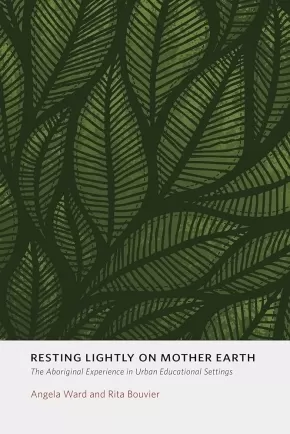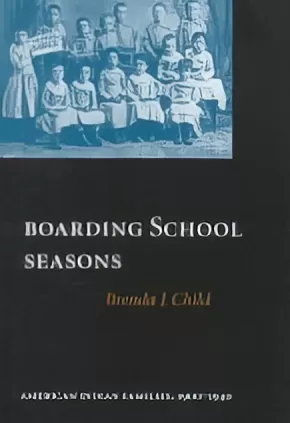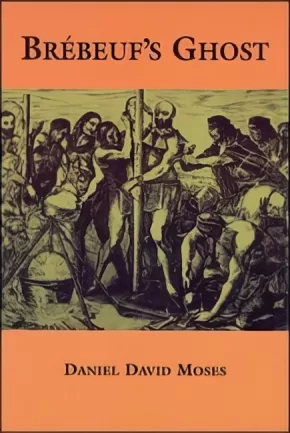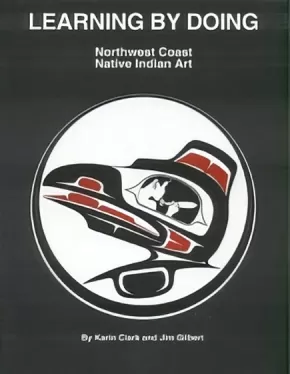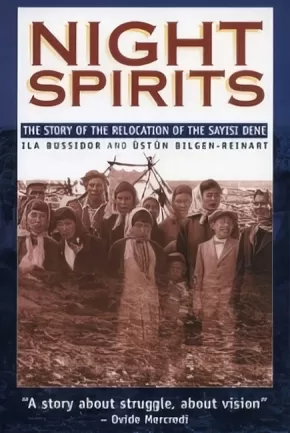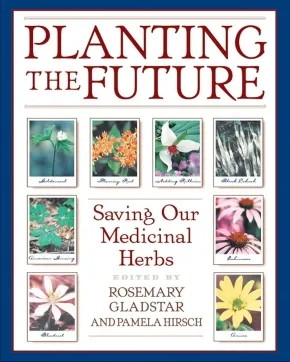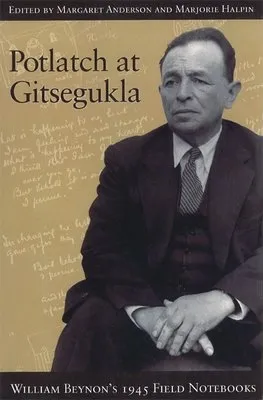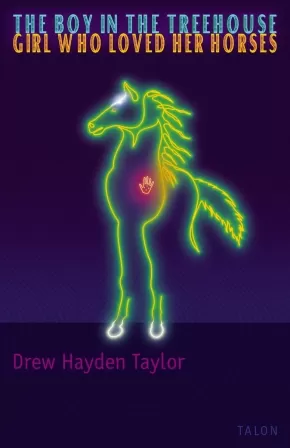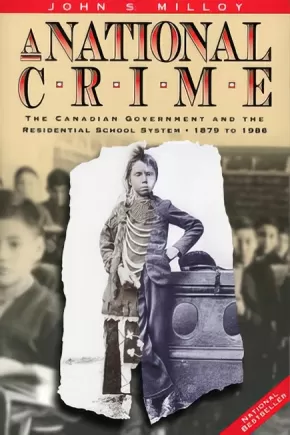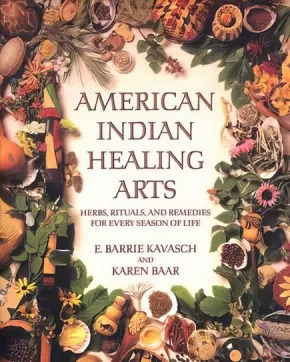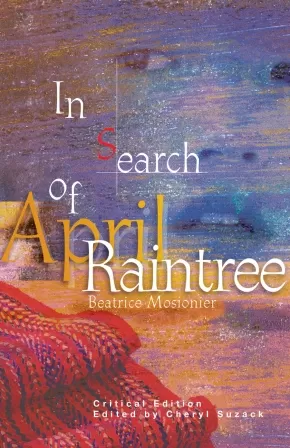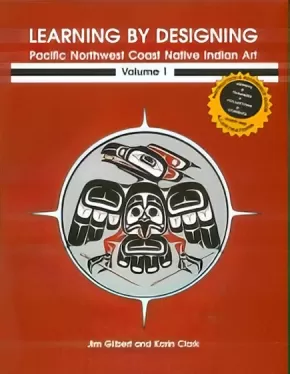Browse Books for Adults
Synopsis:
“The Residential School experience had serious negative consequences for many of our people who have suffered in silence for too long. It is time to take the first step and let others know they are not alone in their suffering. No matter how painful, the stories of our people must be told and heard. Through sharing our past, we can begin to heal ourselves, our communities, our people as we look to a better tomorrow.” —Phil Fontaine, Grand Chief, Assembly of Manitoba Chiefs, former Residential School student
“Any person interested in understanding the Micmac people must read this book. It chronicles the rebuilding of a nation that was bereft of its children. Years have passed, some have spoken but many remain silent, indicating that their wounds have yet to heal.” Jean C. Knockwood, B.A., Director of Post Secondary Education, Indian Brook Reserve, Shubenacadie, Nova Scotia
“These long overdue apologies [from the Canadian government and the Oblate order] are necessary, but they can do little to mend the damage caused by the suffering of generations of Native children in the residential schools. We are only now healing ourselves from that suffering. I see this book as part of that beginning.” —Isabelle Knockwood, from her 1992 Introduction
Synopsis:
The voices of Aboriginal and non-Aboriginal participants are heard as they chronicle their survival in mainstream school systems. The authors describe and analyze the experiences of Aboriginal students, teachers, and pre-service teachers struggling to find a place in urban society. Some voices are resistant, others angry, many questioning, as they enter into tentative coalitions with other urban teachers who pursue social justice for Aboriginal peoples. The editors open the book with a wide-ranging look at the contexts of urban Aboriginal education, and explore the themes of the book—identity, disconnection from the land, spirituality, the effects of a colonial legacy—from their own Aboriginal and mainstream perspectives.
A strength of the book is the diversity of backgrounds and experiences the authors bring. The writers are Aboriginal and non-Aboriginal, from Canada, the United States and Australia. They have taught and worked in elementary and secondary schools, universities and teacher education programs. All have direct experience working in urban educational settings, and all bring passionate advocacy to their writing. Resting Lightly on Mother Earth is intended for both Indigenous and mainstream educators; it is particularly suitable for teachers and administrators in urban systems, teacher educators, and graduate and undergraduate education students.
Additional Information
|
Synopsis:
Boarding School Seasons offers a revealing look at the strong emotional history of Indian boarding school experiences in the first half of the twentieth century. At the heart of this book are the hundreds of letters written by parents, children, and school officials at Haskell Institute in Kansas and the Flandreau School in South Dakota. These revealing letters show how profoundly entire families were affected by their experiences.
Children, who often attended schools at great distances from their communities, suffered from homesickness, and their parents from loneliness. Parents worried continually about the emotional and physical health and the academic progress of their children. Families clashed repeatedly with school officials over rampant illnesses and deplorable living conditions and devised strategies to circumvent severely limiting visitation rules. Family intimacy was threatened by the school's suppression of traditional languages and Native cultural practices.
Although boarding schools were a threat to family life, profound changes occurred in the boarding school experiences as families turned to these institutions for relief during the Depression, when poverty and the loss of traditional seasonal economics proved a greater threat. Boarding School Seasons provides a multifaceted look at the aspirations and struggles of real people.
Synopsis:
In the year 1649, the Iroquois are on the warpath, killing traitors and Christians at the mission of Sainte Marie. The shaman is worried about windigos and the Black Robe about the fires of hell. Worlds collide in a renowned First Nations playwright's epic, dark, funny, and healing vision of early Canada.
Synopsis:
This resource was developed specifically for the BC Science and Social Studies curricula. It is the only comprehensive resource available which provides all the content necessary to learn about B.C.'s living and non-living resources. And best of all it has been developed in B.C. by B.C. educators and has been recommended by the BC Ministry of Education.
Students will learn:
- about land, mineral and water resources; the ways we use the resources and the effects of using them.
- how we use the land for growing crops, for raising animals and hunting wildlife and for forestry, tourism and recreation.
- that B.C.'s mountains are full of minerals and how this abundance of minerals makes mining B.C.'s third most important industry.
- why water is an important resource in B.C. for drinking, hydroelectric power, recreation, industry and as a food source.
- the uses, benefits and economic impact of BC's resources; from traditional First Nations' to present day.
-the evolution of the technology used in resource development and use, environmental issues, sustainability and careers.
The comprehensive teacher's guide provides support materials necessary to meet the prescribed learning outcomes for both the development of skills and the acquisition of knowledge. Hands-on activities, blackline masters and teaching strategies are included.
Synopsis:
This book contains step-by-step instructions and illustrations on the basics of drawing, designing, painting and carving in the Pacific Northwest Coast Native Indian art style.
Synopsis:
For over 1500 years, the Sayisi Dene, ‘The Dene from the East’, led an independent life, following the caribou herds and having little contact with white society. In 1956, an arbitrary government decision to relocate them catapulted the Sayisi Dene into the 20th century. It replaced their traditional nomadic life of hunting and fishing with a slum settlement on the outskirts of Churchill, Manitoba. Inadequately housed, without jobs, unfamiliar with the language or the culture, their independence and self-determination deteriorated into a tragic cycle of discrimination, poverty, alcoholism and violent death.
By the early 1970s, the band realized they had to take their future into their own hands again. After searching for a suitable location, they set up a new community at Tadoule Lake, 250 miles north of Churchill. Today they run their own health, education and community programs. But the scars of the relocation will take years to heal, and Tadoule Lake is grappling with the problems of a people whose ties to the land, and to one another, have been tragically severed.
In Night Spirits, the survivors, including those who were children at the time of the move, as well as the few remaining elders, recount their stories. They offer a stark and brutally honest account of the near-destruction of the Sayisi Dene, and their struggle to reclaim their lives. It is a dark story, told in hope.
Synopsis:
Voted one of the Top 10 books in 2000 by the Vermont Book Publishers Association.
A collective endeavor by United Plant Savers, featuring America's most respected and well-known herbalists.
Contributors include Don Babineau, Tim Blakley, Mark Blumenthal, Jane Bothwell, Stephen Harrod Buhner, David Bunting, Richo Cech, Tane Datta, Shatoiya and Rick de la Tour, Ryan Drum, Doug Elliott, Steven Foster, Cascade Anderson Geller, Kate Gilday, Rosemary Gladstar, James Green, Pamela Hirsch, Christopher Hobbs, Sara Katz, Kathi Keville, Robyn Klein, Richard Liebmann, Brigitte Mars, Pam Montgomery, Nancy and Michael Phillips, Janice J. Schofield, Joanne Marie Snow, Deb Soule, Paul Strauss, Gregory L. Tilford, Krista Thie, Susun S. Weed, David Winston, Martin Wall, Matthew Wood.
While the renaissance in the U.S. botanical market is positive in many respects, medicinal plant populations are suffering from loss of habitat and overharvesting, and many bestselling herbs are now at risk including echinacea, American ginseng, goldenseal, Hawaiian wild kava, and wild yam. The authors share their extensive experience with using and growing thirty-three of these popular herbs and include suggestions for creating your own private herbal sanctuary--whether a city balcony, suburban backyard, or rural retreat. Full-color photographs will inspire experienced and novice herb users alike to protect and cultivate these remarkable healing plants. Readers will also find out how to use herbal analogues for at-risk plants--other medicinal herbs that provide the same benefits and exist in plentiful amounts--and learn ways to make their herbal purchases a vote for sustainability. Planting the Future shows us how we can participate in the land stewardship, habitat protection, and eco-friendly consumption that will ensure an abundant, renewable supply of medicinal plants for future generations.
All author royalties will be used for replanting native medicinal herbs on a 370-acre botanical sanctuary in Ohio.
Synopsis:
William Beynon was born in 1888 in Victoria to a Welsh father and a Tsimshian mother. He was an accomplished ethnographer and had a long career documenting the traditions of the Tsimshian, Nisga'a, and Gitksan. In 1945 he attended and actively participated in five days of potlatches and totem pole raisings at Gitksan village of Gitsegukla. There he compiled four notebooks containing detailed and often verbatim information about the events he witnessed. For over 50 years these notebooks have seen limited circulation among specialists, who have long recognized them as the most perceptive and complete account of potlatching ever recorded.
In Potlatch at Gitsegukla the almost 200 pages of the notebooks are published for the first time. Sketches and a selection of photographs taken by Beynon are also included (augmented by photographs taken by Wilson Duff in 1952). In addition to meticulously transcribing and annotating the text of the notebooks, Margaret Anderson and Marjorie Halpin provide a comprehensive introduction that puts Beynon's account into a Gitskan cultural perspective, as well as extensive appendices listing names, places, and Gitskan terms in the notebooks. There is also an excellent timeline of key events in Gitskan history by James McDonald and Jennifer Joseph.
William Beynon's notebooks are among the most significant written records of Northwest coast potlatching and are an unsurpassed resource documenting these activities among the Gitskan. This rare, first-hand, ethnographic account of a potlatch reveals the wonderful complexities of the events that took place in Gitsegukla in 1945.
Additional Information
296 pages | 6.00" x 9.00" | Paperback
Synopsis:
In this collection of two plays about the process of children becoming adults, Drew Hayden Taylor works his delightfully comic and bitter-sweet magic on the denials, misunderstandings and preconceptions which persist between Native and Colonial culture in North America.
In “The Boy in the Treehouse,” Simon, the son of an Ojibway mother and a British father, climbs into his half-finished tree house on the vision-quest his books say is necessary forhim to reclaim his mother’s culture. “It’s a Native thing,” he informs his incredulous father (who tells him he’d never heard of such a thing from his wife): “Only boys do it. It’s part of becoming a man.” Of course, what with the threats of the police, the temptation of the barbeque next door, and the distractions of a persistent neighbourhood girl, Simon probably wouldn’t recognize a vision if he fell overit.
“Girl Who Loved Her Horses” is the Native name for the strange and quiet Danielle from the non-status community across the tracks, imbued with the mysterious power to draw the horse “every human being on the planet wanted but could never have.” She is and remains an enigma to the people of the reservation, but the power of her spirit remains strong. Years later, a huge image of her horse reappears, covering an entire side of a building in a blighted urban landscape of beggars and broken dreams. The eyes of her stallion, which once gleamed exhilaration and freedom, now glare with defiance and anger. Danielle has clearly been forced to grow up.
With these two plays, Taylor rediscovers an issue long forgotten in our “post-historical” age: the nature of, and the necessity for, these rites of passage in all cultures.
Additional Information
160 pages | 5.50" x 8.50" | Paperback
Synopsis:
“I am going to tell you how we are treated. I am always hungry.” — Edward B., a student at Onion Lake School (1923)
“[I]f I were appointed by the Dominion Government for the express purpose of spreading tuberculosis, there is nothing finer in existence than the average Indian residential school.” — N. Walker, Indian Affairs Superintendent (1948)
For over 100 years, thousands of Aboriginal children passed through the Canadian residential school system. Begun in the 1870s, it was intended, in the words of government officials, to bring these children into the “circle of civilization,” the results, however, were far different. More often, the schools provided an inferior education in an atmosphere of neglect, disease, and often abuse.
Using previously unreleased government documents, historian John S. Milloy provides a full picture of the history and reality of the residential school system. He begins by tracing the ideological roots of the system, and follows the paper trail of internal memoranda, reports from field inspectors, and letters of complaint. In the early decades, the system grew without planning or restraint. Despite numerous critical commissions and reports, it persisted into the 1970s, when it transformed itself into a social welfare system without improving conditions for its thousands of wards. A National Crime shows that the residential system was chronically underfunded and often mismanaged, and documents in detail and how this affected the health, education, and well-being of entire generations of Aboriginal children.
Additional Information
424 pages | 6.00" x 9.00"
Synopsis:
American Indian Healing Arts is a magical blend of plant lore, history, and living tradition that draws on a lifetime of study with native healers by herbalist and ethnobotanist E. Barrie Kavasch.
Here are the time-honored tribal rituals performed to promote good health, heal illness, and bring mind and spirit into harmony with nature. Here also are dozens of safe, effective earth remedies--many of which are now being confirmed by modern research.
Each chapter introduces a new stage in the life cycle, from the delightful Navajo First Smile Ceremony (welcoming a new baby) to the Apache Sunrise Ceremony (celebrating puberty) to the Seminole Old People's Dance.
At the heart of the book are more than sixty easy-to-use herbal remedies--including soothing rubs for baby, a yucca face mask for troubled skin, relaxing teas, massage oils, natural insect repellents, and fragrant smudge sticks. There are also guidelines for assembling a basic American Indian medicine chest.
Additional Information
336 pages | 7.30" x 9.07"
Synopsis:
Memories. Some memories are elusive, fleeting, like a butterfly that touches down and is free until it is caught. Others are haunting. You'd rather forget them, but they won't be forgotten. And some are always there. No matter where you are, they are there, too.
In this moving story of legacy and reclamation, two young sisters are taken from their home and family. Powerless in a broken system, April and Cheryl are separated and placed in different foster homes. Despite the distance, they remain close, even as their decisions threaten to divide them emotionally, culturally, and geographically. As one sister embraces her Métis identity, the other tries to leave it behind.
Will the sisters’ bond survive as they struggle to make their way in a society that is often indifferent, hostile, and violent?
Based on the adult novel In Search of April Raintree, this edition has been revised specifically for students in grades 9 through 12.
Educator Information
Recommended Grades: 9-12. This version of the novel was written specifically for students in grades 9-12 and does not contain the graphic scene that is contained in the original version, In Search of April Raintree.
Grades 10-12 English First Peoples resource.
Find a teacher guide for In Search of April Raintree and April Raintree here: Teacher Guide for In Search of April Raintree and April Raintree: A Trauma-Informed Approach to Teaching Stories of Indigenous Survivance, Family Separation, and the Child Welfare System
Additional Information
256 pages | 5.50" x 8.50" | Paperback
Synopsis:
Memories. Some memories are elusive, fleeting, like a butterfly that touches down and is free until it is caught. Others are haunting. You'd rather forget them, but they won't be forgotten. And some are always there. No matter where you are, they are there, too.
In this moving story of legacy and reclamation, two young sisters are taken from their home and family. Powerless in a broken system, April and Cheryl are separated and placed in different foster homes. Despite the distance, they remain close, even as their decisions threaten to divide them emotionally, culturally, and geographically. As one sister embraces her Métis identity, the other tries to leave it behind.
Will the sisters’ bond survive as they struggle to make their way in a society that is often indifferent, hostile, and violent?
The first edition of In Search of April Raintree, published in 1984, has since touched many generations of readers, becoming a Canadian school classic. In this edition, ten critical essays accompany one of the best-known texts by an Indigenous author in Canada.
Educator Information
In this edition, ten critical essays accompany the text.
A 40th-anniversary edition of In Search of April Raintree is available here: In Search of April Raintree: 40th Anniversary Edition
A version written specifically for students in grades 9-12 that does not contain the graphic scene that is contained in this original version is available here: April Raintree
Additional Information
343 pages | 5.50" x 8.50" | Paperback | Critical Edition
Synopsis:
This reference and instructional manual contains a detailed thoroughly analysed, well-supported comparisons of the four Pacific Northwest First Nations art styles. There are 800 clear, detailed illustrations accompanied by straightforward copy. Topics include design formalise, ovoids, U shapes, S shapes, heads, body parts, and design formation, as well as a step-by-step "How to Draw" section.
This reference and instructional manual contains a detailed, thoroughly analyzed, well-supported comparison of the four Pacific Northwest First Nations art styles. There are 800 clear, detailed illustrations accompanied by straightforward copy. Topics include design formline, ovoids, U shapes, S shapes, heads, body parts, and design formation, as well as a step-by-step "How to Draw" section.




